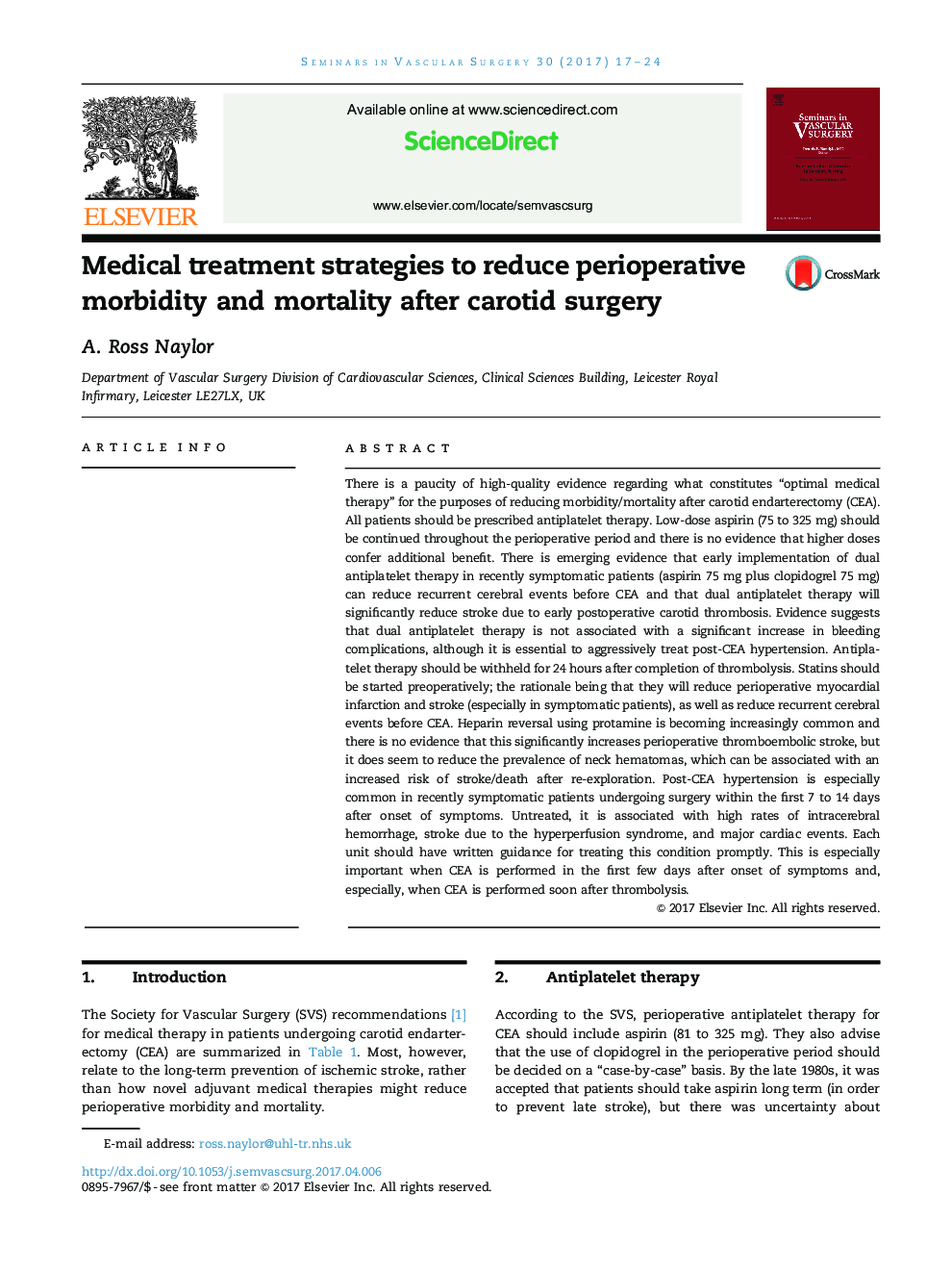| Article ID | Journal | Published Year | Pages | File Type |
|---|---|---|---|---|
| 5621722 | Seminars in Vascular Surgery | 2017 | 8 Pages |
There is a paucity of high-quality evidence regarding what constitutes “optimal medical therapy” for the purposes of reducing morbidity/mortality after carotid endarterectomy (CEA). All patients should be prescribed antiplatelet therapy. Low-dose aspirin (75 to 325 mg) should be continued throughout the perioperative period and there is no evidence that higher doses confer additional benefit. There is emerging evidence that early implementation of dual antiplatelet therapy in recently symptomatic patients (aspirin 75 mg plus clopidogrel 75 mg) can reduce recurrent cerebral events before CEA and that dual antiplatelet therapy will significantly reduce stroke due to early postoperative carotid thrombosis. Evidence suggests that dual antiplatelet therapy is not associated with a significant increase in bleeding complications, although it is essential to aggressively treat post-CEA hypertension. Antiplatelet therapy should be withheld for 24 hours after completion of thrombolysis. Statins should be started preoperatively; the rationale being that they will reduce perioperative myocardial infarction and stroke (especially in symptomatic patients), as well as reduce recurrent cerebral events before CEA. Heparin reversal using protamine is becoming increasingly common and there is no evidence that this significantly increases perioperative thromboembolic stroke, but it does seem to reduce the prevalence of neck hematomas, which can be associated with an increased risk of stroke/death after re-exploration. Post-CEA hypertension is especially common in recently symptomatic patients undergoing surgery within the first 7 to 14 days after onset of symptoms. Untreated, it is associated with high rates of intracerebral hemorrhage, stroke due to the hyperperfusion syndrome, and major cardiac events. Each unit should have written guidance for treating this condition promptly. This is especially important when CEA is performed in the first few days after onset of symptoms and, especially, when CEA is performed soon after thrombolysis.
